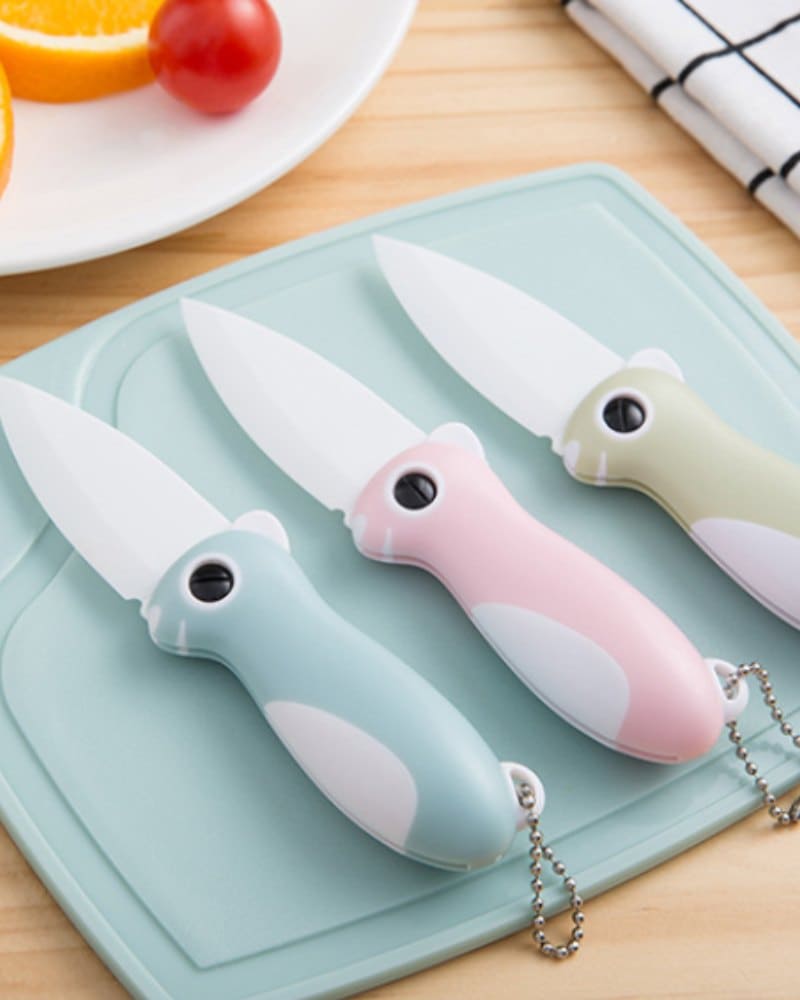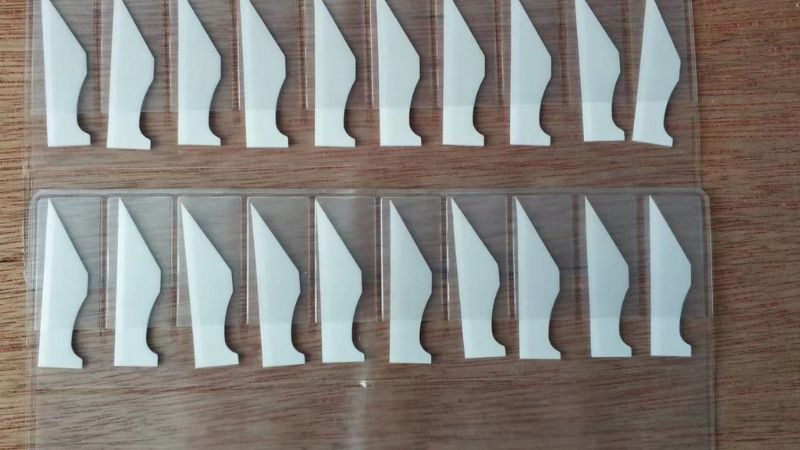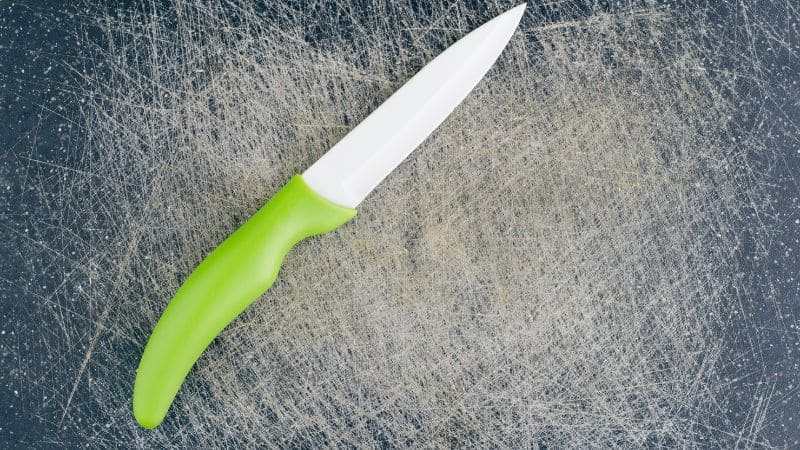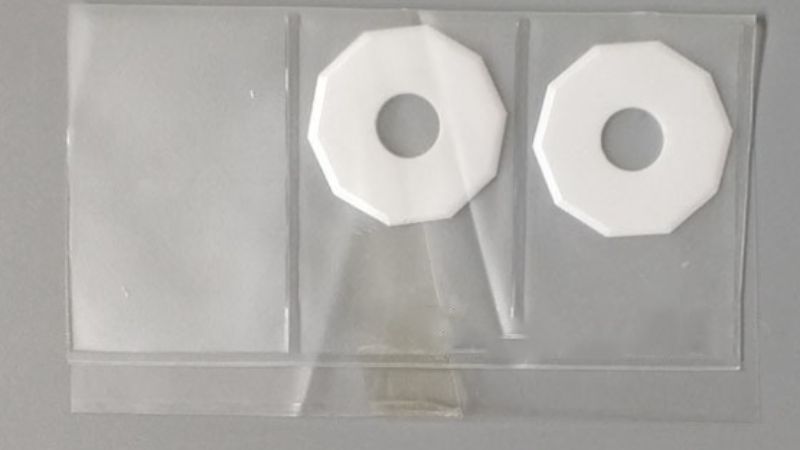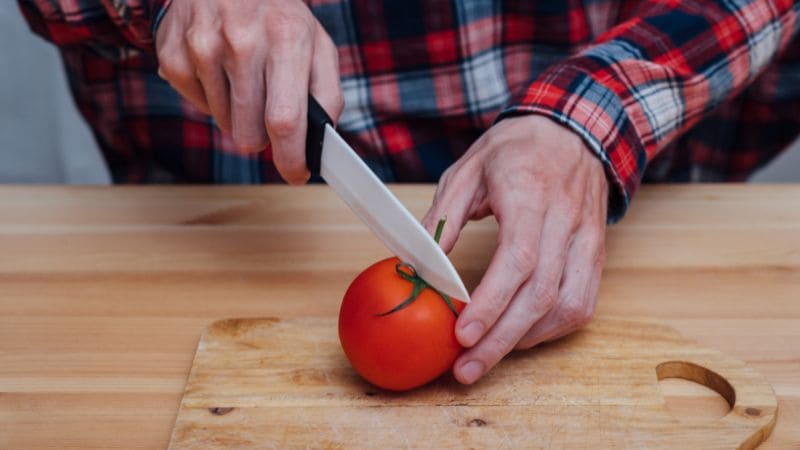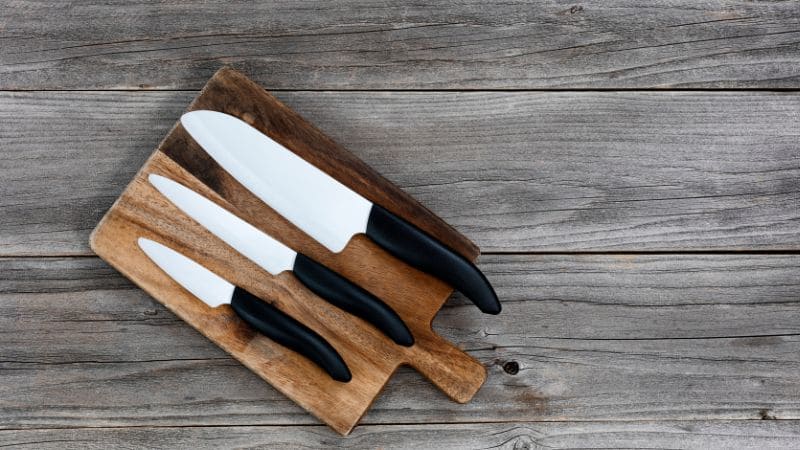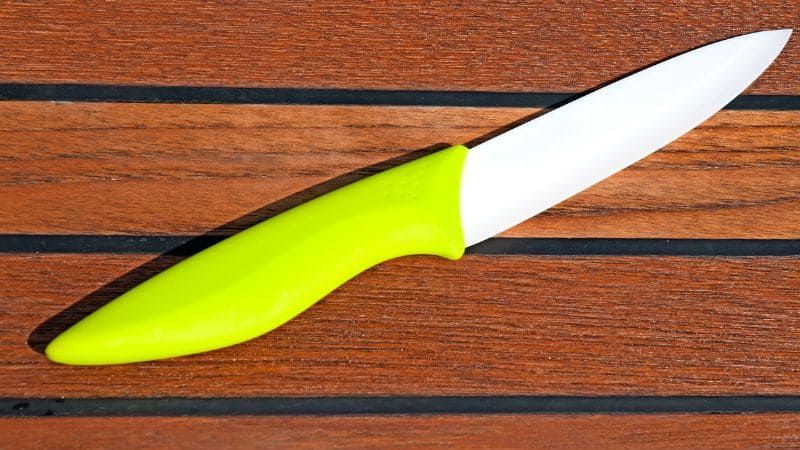Table of Contents
I could go so far as to say that a sharp knife is even more important than any other single piece of equipment in the kitchen. Slicing through ripe tomatoes like butter, deboning a fish fillet; the correct knife can make your cooking experience far more easy and secure. Ceramic knives are a top pick for many folks because of their super sharp edge, low weight and anti-rust makeup. But here’s the kicker — all ceramic blades will eventually dull.
Consequently, can you hone ceramic blades? Most certainly – but not in the way you would sharpen a steel blade. The blades of ceramic knives are crafted with zirconium oxide, known for approaching the hardness level of a diamond. That hardness also means that traditional knife sharpeners aren’t going to do you much good. On the contrary, you require materials with high functionalities like a diamond sharpening stone or an electric ceramic knife sharpener.
In this article, we will guide you on the best way to sharpen ceramic knives in your house comfortably — showing what tools are required and tips that would ensure its longevity. When you imagined being able to sharpen your ceramic knife, it was probably just a dream… until now.
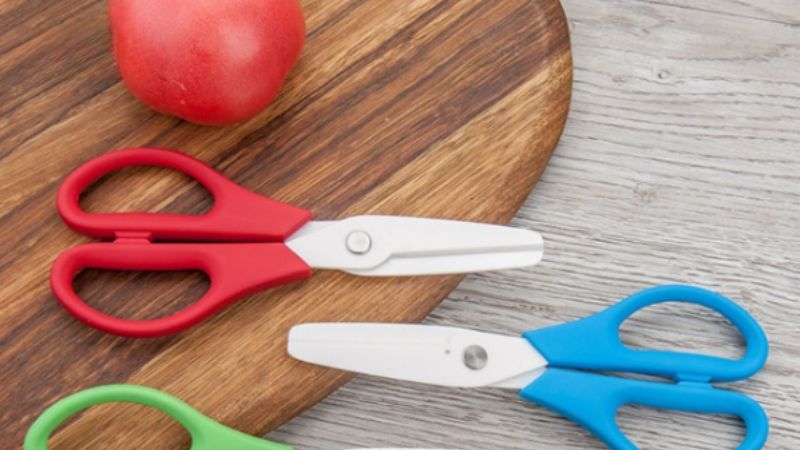
What Are Ceramic Knives?
They have long been the blades of option for chefs and also house cooks who require fast, clean cuts as well as high quality– however while some people adore them, others think they’re also breakable or do not supply enough resistance to develop an edge. Ceramic Knives – instead of steel, ceramic knives are made with zirconium oxide (zirconia), one hell of a hard material. Because of this hardness, ceramic knives hold their sharpness much longer then any stainless steel blade.
Of course, ceramic knives have some good reasons for you to consider using them but they too suffer a fair few cons. So do their brittleness, which is both a strength and a weakness. They could be sharpened to a level beyond most steels, but sadly they are just as likely- if even more so with someone using them for the first time; To break or chip when dropped.
Composition and Benefits
Composed with a unique blend of ingredients, ceramic knives source their strength and cutting ability from the elements within. Zirconium oxide is pressed into a block before being fired at super high heats, creating the following features for blade:
- Extremely Hard – The 8.5 Mohs scale of hardness, making it slightly softer than a diamond.
- Rust Proof – Ceramic knives do not rust, and that makes them the perfect knife for a high-moisture environment.
- Odor Resistant – They do not retain food odors or flavors, so every cut tastes like it should.
This makes ceramic knives excellent for cutting through fruits, vegetables and boneless meats.
Comparison with Steel Knives
When comparing ceramic knives to steel, the differences are clear:
| Feature | Ceramic Knives | Steel Knives |
|---|---|---|
| Sharpness Retention | Retains sharpness 10x longer | Dulls quickly, requiring frequent honing |
| Weight | Lightweight | Heavier |
| Corrosion Resistance | Rust-proof | Prone to rust without maintenance |
| Flexibility | Brittle, prone to chipping | Flexible, less likely to break |
| Cutting Precision | Excellent for delicate, fine cuts | Good for heavy-duty chopping |
Ceramic knives aren’t meant for every kitchen task. They are fantastic with softer foods like soft veggies but not nearly as flexible when it comes to slicing into bone or frozen food, something for which steel knives fit more appropriately.
Can Ceramic Knives Be Sharpened?
Yes, ceramic knives can be sharpened, but not in the same way as steel knives. If you’ve ever tried to run a ceramic blade through a standard knife sharpener, you probably noticed it had little to no effect. That’s because ceramic knives are made from zirconium oxide, a material much harder than steel, requiring specialized sharpening tools.
Why Regular Sharpeners Don’t Work
Steel sharpeners and honing rods are designed to realign and grind down softer metals. In contrast, ceramic knives demand a diamond sharpening stone or diamond-coated tools – materials hard enough to grind zirconia effectively. This isn’t a flaw in ceramic knives but rather a testament to their superior hardness.
| Material | Mohs Hardness Scale | Sharpening Tool Required |
|---|---|---|
| Ceramic (Zirconium Oxide) | 8.5 | Diamond Sharpener or Stone |
| Stainless Steel | 4.0 – 6.5 | Honing Rod, Whetstone |
| Carbon Steel | 7.5 | Whetstone, Honing Steel |
| Diamond | 10.0 | Not Sharpened – Used for Grinding |
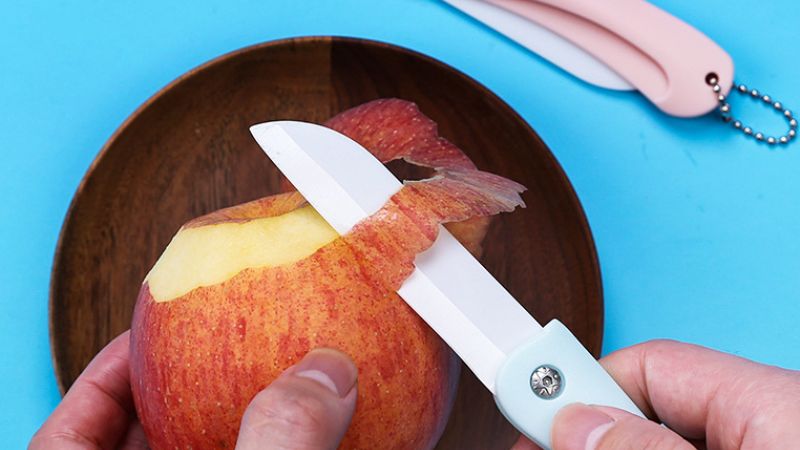
How to Know When Your Ceramic Knife Needs Sharpening
Ceramic knives hold their edge much longer than steel, but they eventually dull. Here are a few signs your ceramic blade needs sharpening:
- Increased Cutting Resistance – If slicing tomatoes or soft fruits becomes difficult, your blade is dull.
- Jagged or Uneven Cuts – Clean cuts become ragged, especially with vegetables and meats.
- Visible Micro-Chips – Examine the blade under good light; small chips along the edge indicate dullness.
- Slip and Tear – If your knife slips off food rather than cutting smoothly, the edge has worn down.
Pro Tip: Avoid waiting until the blade is completely dull. A light touch-up with a diamond file or electric sharpener can maintain your knife’s edge for longer periods without excessive grinding.
Tools for Sharpening Ceramic Knives
To sharpen a ceramic knife effectively, diamond sharpening tools are essential. Here are the most recommended tools:
Diamond Sharpening Stone
- Description: A flat stone embedded with fine diamond particles.
- Method: Place the stone on a stable surface, hold the knife at a 20-degree angle, and slide the blade across the stone from heel to tip. Repeat 6-8 times per side.
- Cost: $30 to $80.
Electric Diamond Sharpener
- Description: An automatic sharpener with slots lined with diamond-coated grinding wheels.
- Method: Insert the knife edge into the slot and slowly pull it through, ensuring even pressure. This is the easiest and safest option for beginners.
- Cost: $50 to $150.
- Recommended Brand: Kyocera Electric Diamond Sharpener.
Diamond File or Rod
- Description: A handheld file coated with diamond grit. Perfect for small touch-ups.
- Method: Hold the knife securely, position the file at a 20-degree angle, and gently stroke along the edge.
- Cost: $20 to $40.
| Tool | Ease of Use | Cost Range | Best For |
|---|---|---|---|
| Diamond Sharpening Stone | Moderate | $30 – $80 | Full sharpening, blade repair |
| Electric Diamond Sharpener | Easy | $50 – $150 | Quick sharpening, low-maintenance users |
| Diamond File or Rod | Moderate | $20 – $40 | Precision touch-ups, small chips |
Is It Better to Sharpen Ceramic Knives at Home or Professionally?
Sharpening ceramic knives at home is possible, but it’s important to approach the process carefully. A heavy hand can lead to further chipping or blade damage. If your ceramic knife has significant chips or visible cracks, it may be best to send it to a professional sharpening service.
- DIY Sharpening: Cost-effective but carries the risk of damaging the knife if done improperly.
- Professional Services: More expensive but ensures the knife is sharpened correctly without further chipping.
Source: According to JCK Ceramic Blades, sending knives to a professional service or using their proprietary electric sharpeners results in longer-lasting blades and a reduced risk of breakage during sharpening.
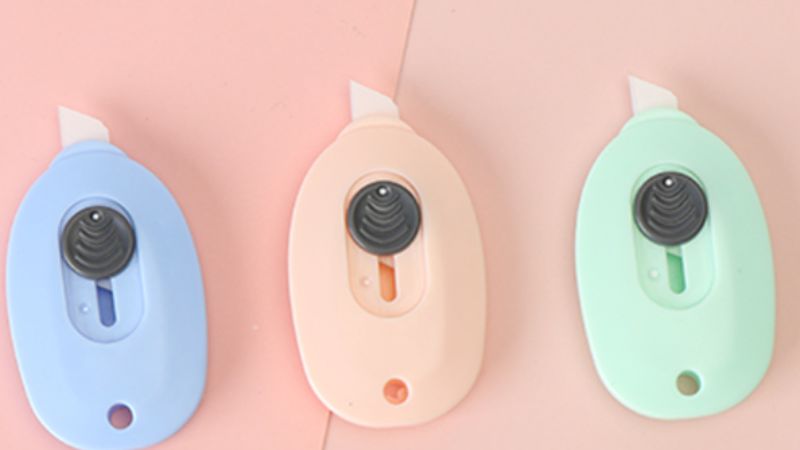
How to Sharpen Ceramic Knives at Home
You can sharpen ceramic knives at home if you have the tools to do so and you know the right way. Because ceramic knives are brittle and liable to chip, the sharpening process takes a light, steady hand and precision. Hurrying or using the wrong tools can do more damage than good.
Tools Required
Before you begin, make sure you have the following tools:
- Diamond Sharpening Rod – The key to manual sharpening. The diamond pumice is hard enough to grind down the zirconium oxide.
- Electric Diamond Sharpener – A faster, easier, and more foolproof way for rookies.
- Soft Cloth – Cleans blade before and after sharpening.
- Knife Holder (Optional) – Stabilizes knife as you sharpen, preventing accidental slips.
Step-by-Step Guide
- Prepare Your Workspace
- Find a stable, flat surface with good lighting. Place a towel or rubber mat under the sharpening tool to prevent it from slipping.
- Clean the Knife
- Clean the blade with warm water and soap to remove food particles or residue. A clean blade ensures even and consistent sharpening.
- Position the Knife
- Hold the ceramic knife at a 15-20 degree angle against the sharpening rod or electric sharpener. Consistency is key – fluctuating angles can lead to uneven sharpening or micro-chipping.
- Begin Sharpening
- Manual Method (Rod or Stone):
- Begin at the heel of the blade and smoothly slide it across the rod toward the tip. Do this 5-10 times per side. Apply light, even pressure.
- Use alternate sides for even sharpening.
- Electric Sharpener:
- Place the blade inside the allotted space. Make long, gentle strokes, from heel to tip, using very little pressure. Perform 3-5 repetitions on either side.
- Manual Method (Rod or Stone):
- Test the Sharpness
- Do the paper test: Hold a piece of paper up and try to cut it in half with the knife. A well-honed edge should slice cleanly without tearing the page.
- Final Touch-Up
- If needed, repeat the sharpening step. For any minor chips, a couple more strokes will sharpen the edge.
Common Mistakes to Avoid
- Over-Sharpening – Applying too much force or sharpening excessively can wear down the blade unnecessarily, making it more fragile.
- Incorrect Angle – Maintaining the 15-20 degree angle ensures the blade is sharpened correctly. Deviating from this can cause uneven edges.
- Using the Wrong Surface – Never attempt to sharpen ceramic knives on regular whetstones or steel rods. This will damage both the knife and the sharpener.
Pro Tip: If you’re unsure, test it out on softer items such as tomatoes, or cucumbers, after sharpening. If the blade cuts with ease, it’s ready for meatier jobs
Professional Sharpening Services for Ceramic Knives
While sharpening ceramic knives at home is possible, many knife owners prefer the precision and reliability of professional sharpening services. Ceramic knives are incredibly hard but brittle, making improper sharpening more likely to damage the blade. Professional services use specialized tools that aren’t typically available to the average consumer, ensuring the blade is restored without unnecessary wear or further chipping.
How It Works
Most professional knife sharpening services utilize diamond grinding wheels or electric sharpening systems designed specifically for ceramic blades. These tools allow for controlled sharpening at the correct angle, reducing the risk of fracturing the blade.
- Mail-In Services – Many brands, such as JCK, offer mail-in sharpening. You simply send the knife to their service center, and they sharpen and return it within a week or two.
- In-Store Sharpening – Some kitchenware stores provide same-day sharpening services. This option is convenient and ensures you can oversee the process if you’re concerned about blade damage.
- Local Knife Specialists – Some knife shops specialize in ceramic knife sharpening, using manual and electric diamond sharpeners to restore the blade’s edge.
Tip: If your ceramic knife has significant chips, always opt for professional sharpening. DIY sharpening may worsen the damage if not done carefully.
Cost and Time Estimates
The cost of professional sharpening can vary depending on the extent of the damage and the service provider. However, it remains relatively affordable compared to purchasing a new ceramic knife.
| Service Type | Estimated Cost | Turnaround Time |
|---|---|---|
| Mail-In (Manufacturer) | $15 – $25 per knife | 1-2 weeks |
| In-Store Sharpening | $10 – $20 per knife | Same day to 48 hours |
| Specialty Knife Shops | $20 – $30 per knife | 3-5 business days |
Pros and Cons of Professional Sharpening
Pros:
- Precision – Achieves a more uniform edge without risking further damage.
- Time-Saving – Minimal effort on your part; drop it off or mail it in.
- Longer Blade Life – Professionally sharpened blades typically last longer between sharpening sessions.
Cons:
- Cost – More expensive than DIY sharpening.
- Inconvenience – Shipping the knife or visiting a store takes time.
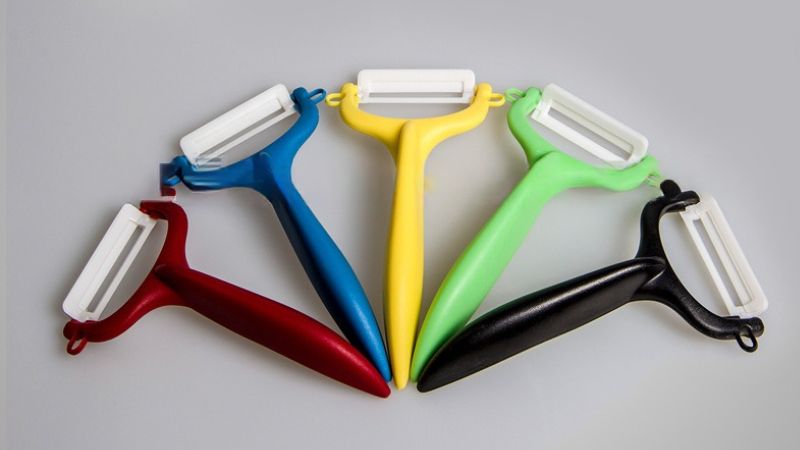
DIY vs. Professional Sharpening – Which Is Better?
Choosing between sharpening ceramic knives at home or seeking professional services depends on your experience and the condition of the blade. Both methods have advantages and drawbacks, and understanding these can help you make an informed decision.
DIY Sharpening
DIY sharpening can be rewarding and cost-effective if you have the right tools. Using diamond sharpening rods or electric sharpeners designed for ceramics can restore the edge of slightly dulled knives. However, there are risks involved if the wrong angle or pressure is applied.
Pros:
- Affordable – Once you invest in the tools, sharpening at home is free.
- Convenient – You can sharpen the knife whenever necessary without waiting for a service.
- Control – You manage the sharpening process to suit your needs.
Cons:
- Risk of Damage – Applying too much pressure or incorrect angles can lead to chips.
- Tool Investment – Diamond sharpeners can be pricey initially.
- Learning Curve – Proper technique takes practice to perfect.
Professional Sharpening
Professional services provide a level of precision that’s difficult to achieve at home, especially for severely chipped or dulled ceramic knives. Experts use diamond-coated grinding wheels to ensure the blade is sharpened uniformly without the risk of over-grinding.
Pros:
- Highly Accurate – Professionals restore blades with exceptional precision.
- Safe for Damaged Knives – Ideal for blades with chips or cracks.
- Longer Blade Life – Reduces the likelihood of unnecessary material loss.
Cons:
- Cost – Can range from $10 to $30 per knife, depending on damage.
- Time-Consuming – Mail-in services may take 1 to 2 weeks.
- Inconvenience – Shipping or traveling to a sharpening location adds extra effort.
Tip: If your knife is lightly dulled, try a diamond rod at home. For significant chips, seek professional help to avoid further damage.
How Often Should You Sharpen Ceramic Knives?
Unlike steel knives, ceramic knives hold their edge for an extended period, often staying sharp 10 times longer than their metal counterparts. However, even the hardest ceramic blades will eventually lose their fine edge with regular use. Knowing how often to sharpen your ceramic knives depends on a few key factors.
Factors That Affect Sharpening Frequency:
- Usage Frequency – Daily use will dull a ceramic knife faster than occasional slicing.
- Cutting Surface – Using hard surfaces like glass or stone accelerates blade dullness. Stick to wood or plastic cutting boards to extend the lifespan.
- Type of Food – Cutting soft foods like fruits or boneless meats preserves the blade. Avoid cutting bone or frozen items, as they can chip the edge.
General Guidelines for Sharpening:
- Home Use – Sharpen every 1 to 3 years, depending on how often you use the knife.
- Professional Use – In busy kitchens, sharpening may be needed every 6 to 12 months.
- Light Use (Occasional) – A ceramic knife used sporadically may only require sharpening every 3 to 5 years.
| Usage Type | Recommended Sharpening Frequency |
|---|---|
| Daily Home Use | Every 1-2 years |
| Professional Kitchen Use | Every 6-12 months |
| Occasional/Light Use | Every 3-5 years |
Pro Tip: Inspect your knife regularly. If you notice micro-chips or increased resistance while slicing, it may be time for sharpening—even if it hasn’t reached the recommended timeframe.
Preventing Ceramic Knife Dullness
Ensuring your ceramic knife stays sharp for as long as possible comes down to proper care and use. While ceramic blades are known for their durability, small adjustments to how you handle and store them can significantly extend their lifespan.
Proper Cutting Techniques:
- Use Soft Cutting Boards – Always cut on wood, bamboo, or plastic boards. Hard surfaces like glass or marble can quickly dull or chip the blade.
- Avoid Twisting Motions – When cutting, use straight downward or slicing motions. Twisting the blade while cutting can cause it to chip.
- Use for Appropriate Foods – Ceramic knives are best for soft foods like fruits, vegetables, and boneless meats. Avoid using them to cut frozen foods or bones.
Storage and Care:
- Use Blade Guards or Sheaths – Store ceramic knives in protective sheaths or blocks to prevent accidental chipping.
- Avoid Drawer Clutter – Do not store ceramic knives loose in a drawer where they can knock against other utensils.
- Hand Wash Only – Avoid dishwashers, as the blade can chip during the washing cycle. Instead, gently wash with warm, soapy water and dry immediately.
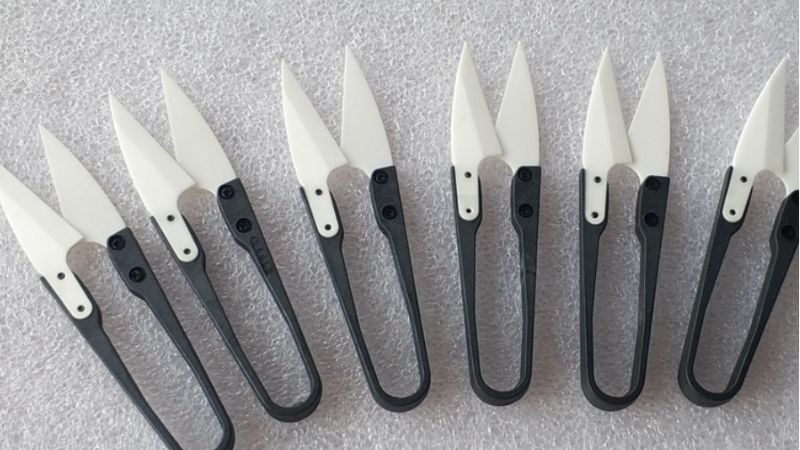
FAQ About Sharpening Ceramic Knives
Can I use a regular knife sharpener on ceramic knives?
No. Regular knife sharpeners are designed for softer steel blades. Ceramic knives require diamond sharpening tools to restore their edge.
How do I know if my ceramic knife needs sharpening?
If your knife begins to resist slicing soft foods or shows visible chips along the edge, it likely needs sharpening.
Is sharpening a ceramic knife dangerous?
Not if done carefully. Always use light pressure and hold the knife at a consistent angle to avoid chipping the blade.
Should I sharpen ceramic knives at home or professionally?
Light sharpening can be done at home with the right tools, but for significant chips, professional services are recommended.
Conclusion
Sharpening ceramic knives is achievable with the right tools and techniques. Regular care and proper storage can extend their lifespan, but when dullness appears, diamond sharpeners or professional services will restore their edge.
